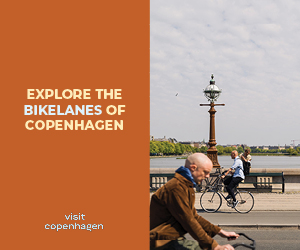Sublime: Tell us about On|Off. What is it all about?
Lee Lapthorne: On|Off was set up in 2003 as a platform for designers on both the official London Fashion Week schedule – ‘On’ – and the unofficial schedule – ‘Off’ – to help them showcase their collections. Our first season was at the National Army Museum in September 2003 and ever since it has been at The Royal Academy of Arts. The idea was to find a decent central venue for designers to show, where the pressure of catwalk production is removed – we provide that – and where a degree of mentoring is given. The costs of going it alone can be crippling for designers and they’re often forced to use obscure venues that press and buyers simply aren’t prepared to travel to.
S: What started it all? Did you have one too many at the pub after a fashion show flopped and decide something must done?
LL: (Laughs) No, no, it all came about because I was producing shows for a reasonably established names like Emma Cook, Robert Cary-Williams, Boudicca and Preen and it became apparent that although they were ‘names’, they needed support and nurturing in order to sustain their business. First-time designers tend to have investment for an initial catwalk show, be it from a partner or family who’ve saved up, but after a few seasons they’ve used up their personal resources and that’s when someone needs to step in and give them somewhere to show.
S: How do you vet designers who want to show at On|Off?
LL: There is a strict selection process in front of a panel of industry professionals – journalist Caryn Franklin, designer Betty Jackson and Zoe Broach of Boudicca. They assess an individual’s overall outlook including design skills, business-savvy and production capabilities. They must be able to produce what they show too, otherwise potential buyers simply can’t take orders and it’s a waste of money showing at all.
S: What about London’s enfant terrible, Gareth Pugh? His creations are not exactly production friendly?
LL: Gareth is very interesting and he definitely has his own agenda, which probably isn’t about making vast quantities of garments at the moment. What’s different about Gareth is that he’s becoming known as an international artist rather than just a fashion designer; he is a prime example of a move from the confines of traditional job descriptions into a less definable, curatorial genre. We have a similar designer on board at the moment and it is something we try to recognise and push. There is a growing demand for all-round visionaries.
S: Do you mentor designers to help them fulfil their potential?
LL: It’s something we touch on. We certainly offer advice and put them in touch with people who can back them or take them further creatively. We’ve become something of a matchmaking agency.
S: What practical advice do you have for designers?
LL: Find your market, get yourself a stockist, look at exhibition stands in London, then Paris and after two or three years look to show on the catwalk. But build slowly and listen to advice. Buyers won’t invest too soon; they want to watch you for a few seasons and see how you develop. So many designers dream of doing a catwalk show immediately, hoping they’ll be discovered and the rest will simply be history. They usually only listen to advice after three seasons of slogging it. That’s the time it takes to iron out any diva tendencies!
S: What is your pearl of wisdom for designers setting up their own businesses?
LL: Don’t expect to make any money! No, really, it’s don’t give up. If you have a dream, don’t lose sight of it.















